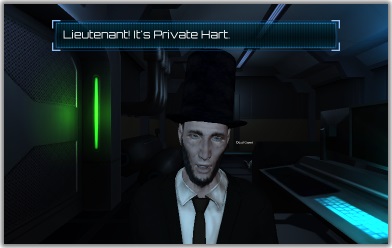
This page describes how to set up the Dialogue System with Rogo Digital's LipSync Pro and LipSync Lite. (LipSync Pro or LipSync Lite is required.)
LipSync copyright © Rogo Digital.
Follow these steps to set up the Dialogue System with LipSync.
Third Party Support/LipSync Support. This will unpack files into the folder Third Party Support/LipSync.Third Party Support/LipSync Support/Scripts/SequencerCommandEyeControl.cs.entrytag keyword; see Using entrytag To Simplify Sequences.The Example folder contains an example scene that uses LipSync. In this scene, Private Hart is disguised as Abraham Lincoln. His lines use the LipSync() sequencer command, such as:
LipSync(Hart1)
The LipSync Data files are in a Resources subfolder. They reference audio clips in an Audio subfolder.
You can use the following sequencer commands in your dialogue entries' Sequence fields to interface with LipSync.
Syntax: LipSync(lipSyncData[, subject[, nowait]])
Description: Plays a LipSync data file.
Parameters:
Resources folder.speaker.nowait: If present and nowait, the sequencer command doesn't wait for LipSync to finish playing.Example:
LipSync(Greetings/Hello) (Plays the clip Resources/Greetings/Hello through the speaker's LipSync component)Syntax: SetEmotion(emotion[, blendTime[, subject]])
Description: Sets a LipSync character's emotion.
Parameters:
speaker.Examples:
SetEmotion(Happy Emotion, 0.5, Wife) (Sets Wife's emotion to "Happy Emotion", blending to that emotion state over 0.5 seconds)Syntax: EyeControl([target[, lookAmount[, subject]]])
Description: Sets an EyeController target.
Parameters:
Examples:
SetEyeControl() (Sets the speaker's EyeController to look at the listener)SetEyeControl(Husband, , Wife) (Sets Wife's EyeController to look at Husband)